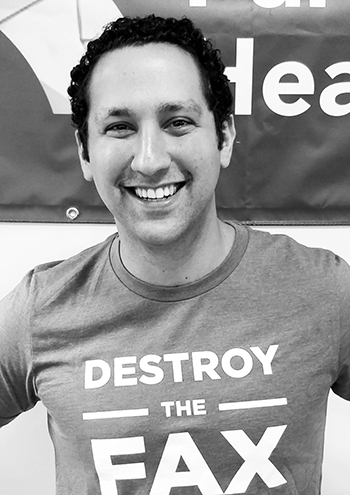Stakeholders seek to ramp up pressure to e-prescribe

By Liz Beaulieu, Editor
Updated 9:58 AM CST, Fri March 10, 2023
 WASHINGTON – Industry stakeholders have begun meeting with CMS officials and legislators to take “a pulse check” on their willingness to raise the stakes around e-prescribing for HME.
WASHINGTON – Industry stakeholders have begun meeting with CMS officials and legislators to take “a pulse check” on their willingness to raise the stakes around e-prescribing for HME.
Stakeholders have been pushing providers to adopt e-prescribing for years – and the largest organizations and nationals in the industry even came together in 2021 to form DMEscripts – but looking at CMS or Congress to add a layer of pressure takes those efforts to another level.
“When you look at what’s happening out there with interoperability and, specifically, FIRE (Fast Healthcare Interoperability Resources), as well as the increase in prior authorizations, it appears the timing is right,” said Tom Ryan, president and CEO of AAHomecare, one of the stakeholders behind DMEscripts. “We socialized the idea with our Executive Committee, and they thought it was worthy of our time and effort. As a matter of fact, they want us to make it one of our key priorities.”
AAHomecare has subsequently hosted conferences calls with interested stakeholders, including not only DMEspripts, but also Parachute Health and GoScripts, to discuss next steps.
The association also planned to bring up the possibility of a regulation requiring e-prescribing with Jason Bennett, director of technology, coding and pricing grouping for the Center for Medicare at CMS, during an upcoming meeting, Ryan says.
“We’ll likely have to move it up to a higher level, but we’re hoping to get the lay of the land from Jason to see where we should go with this,” he said. “We also want to manage expectations because this isn’t going to happen next month. It’s going to be a slower process, with issues around unwinding the PHE and reimbursement relief taking top priority.”
While a regulation from CMS is preferable, AAHomecare is also exploring legislative action, possibly what’s called a concurrent resolution that wouldn’t have the force of law but would serve as a statement of support, Ryan says.
“That might be an initiative we’d like to pursue,” he said, “but we’re starting with the agency.”
While there’s still plenty of runway, e-prescribing has enough buy-in now to make a requirement a more reasonable ask, says John Brady, CEO of DMEscripts.
“The strength of e-prescribing is on the scalability of the network – with more and more suppliers, there’s more creditability with prescribers,” he said. “In the fourth quarter of last year, we had more suppliers and prescribers coming onto our network than any other quarter, and this wasn’t regionally, it was nationally. We’ve always had the nationals, but now we’re starting to see the super regionals and independents join, and that’s where it gets exciting to me. The tide is turning.”
There are selling points for e-prescribing for all parties involved, especially when digital orders are connected to the necessary clinical documentation or prior authorization requirements upfront, says David Gelbard, founder and CEO of Parachute Health, which counts over 160,000 prescribers across the country on its network.
“What's needed is a real-time feedback loop that allows each stakeholder to know if a patient's DME meets coverage requirements,” he said. “Having the transparency into the payor's rules at the point of care drives less frustration for the prescriber, a reduction in costs for the DME supplier chasing paper documentation, and ultimately, faster time to delivery for the patient.”
- Read about how 70% of the respondents to a recent HME Newspoll are using e-prescribing and seeing it pay off.
Comments